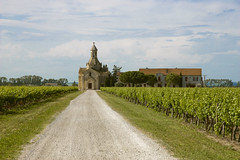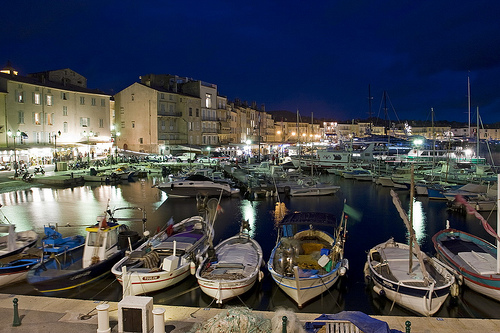When in France – enjoy the food, landscapes, culture, weather and wine!
Provence Drinks
 The region is most famous for her rosé wines (Bandol, Cassis, Coteaux de Provence), and for its Pastis. This aniseed-flavoured alcoholic drink is served with water – measurements vary, from very light ( usually teasingly called “the touristic measure” by the locals) to very strong ( locally called a “mummy” due to its colour). The two leading brands are Pastis 51 and Ricard. The pastis is so characteristic of the region that it is the object of several popular songs, including “51, je t’aime”.
The region is most famous for her rosé wines (Bandol, Cassis, Coteaux de Provence), and for its Pastis. This aniseed-flavoured alcoholic drink is served with water – measurements vary, from very light ( usually teasingly called “the touristic measure” by the locals) to very strong ( locally called a “mummy” due to its colour). The two leading brands are Pastis 51 and Ricard. The pastis is so characteristic of the region that it is the object of several popular songs, including “51, je t’aime”.
Provence Wines AOC
1. Coteaux d’Aix-en-Provence and Les Baux-de-Provence
The Coteaux d’Aix-en-Provence AOC is the second largest Provençal wine appellation, covering over 50 communes in the west and northwestern regions of Provence. The area comprises the city of Aix-en-Provence and surrounding communes. Nearly 60% of the production is red wine, followed by 35% rosé and 5% white wine. The major grape varieties include Grenache, Cinsaut and Mourvedre, and Cabernet Sauvignon was introduced to the region in the 1960s. The cuttings came from the Bordeaux estate of Château La Lagune. The main white wine grapes of the Coteaux d’Aix-en-Provence include Bourboulenc, Clairette, Grenache blanc, Chardonnay, Sauvignon blanc and Semillon. Some producers produce white nouveau wine (young wine) that is released in December following the harvest and only two weeks after the release of Beaujolais nouveau. Unlike the red Beaujolais wine, these Provençal white wines are not required to have the words nouveau or primeur on the label.
Within the Coteaux d’Aix-en-Provence is the smaller Les Baux-de-Provence AOC which was granted AOC status in 1995. The climate of the region is very hot with the surrounding valley known as the Val d’Enfer (Valley of Hell). Vineyards are centered around the hilltop village of the Les Baux-de-Provence and red grape varieties account for around 80%. with some white wine and a dry rosé. The leading grape varieties are Grenache, Mourvedre and Syrah. The AOC rule requires that no two varieties can compose more than 90% of the blend with Carignan, Cinsaut and Counoise permitted but at a maximize usage of 30%. The use of Cabernet Sauvignon is growing in prevalence but it limited to composing no more than 20% of the blend. The rosés of Les Baux-de-Provence are composed of a minimum 60% of Cinsaut, Grenache and Syrah with similar requirements to the AOC red wine that no two grapes varieties compose more than 90% of the blend. Baux-de-Provence was the first AOC to require all vineyards to be farmed biodynamically. The rule was adopted as producers had already converted to organic viticulture, eliminating the use of chemicals that could easily dispersed from the vines by the strong Mistral wind.
2. Bandol
 Bandol AOC, located near the coast east of Marseille and Cassis, is one of the most internationally recognized wines of the Provence regions. Based around the fishing village of Bandol, west of Toulon, the AOC is produced by 8 communes with silicon & limestone soils. Those soils and the warm, coastal climate are ideally suited for the late ripening Mourvedre grape which is the major variety. For both the red and rosé wines, Mourvedre must account for at least 50% of the blend, though most producers will use significantly more, with Grenache and Cinsaut usually completing the composition. Syrah and Carignan are restricted in Bandol to a maximum of 15% of the blend or 10% individually. Nearly 70% of the production is red wine with rosé and a small amount of white wine making up the remainder. Red Bandol wine is characterized by its dark color with rich flavors of black fruit, vanilla, cinnamon and leather and usually requires at least 10 years of aging before it fully develop, although some is produced to be drinkable in three years. Prior to release, the wine is required to age at least 18 months in oak. The white wines of Bandol are composed primarily of Clairette, Bourboulenc and Ugni blanc. Previously Sauvignon blanc was used and is not prohibited by the AOC rules. The rosés of Bandol are characterized by spicy and earthy flavors that can resemble the Rhône rosés from Tavel AOC, with some having strawberry notes.
Bandol AOC, located near the coast east of Marseille and Cassis, is one of the most internationally recognized wines of the Provence regions. Based around the fishing village of Bandol, west of Toulon, the AOC is produced by 8 communes with silicon & limestone soils. Those soils and the warm, coastal climate are ideally suited for the late ripening Mourvedre grape which is the major variety. For both the red and rosé wines, Mourvedre must account for at least 50% of the blend, though most producers will use significantly more, with Grenache and Cinsaut usually completing the composition. Syrah and Carignan are restricted in Bandol to a maximum of 15% of the blend or 10% individually. Nearly 70% of the production is red wine with rosé and a small amount of white wine making up the remainder. Red Bandol wine is characterized by its dark color with rich flavors of black fruit, vanilla, cinnamon and leather and usually requires at least 10 years of aging before it fully develop, although some is produced to be drinkable in three years. Prior to release, the wine is required to age at least 18 months in oak. The white wines of Bandol are composed primarily of Clairette, Bourboulenc and Ugni blanc. Previously Sauvignon blanc was used and is not prohibited by the AOC rules. The rosés of Bandol are characterized by spicy and earthy flavors that can resemble the Rhône rosés from Tavel AOC, with some having strawberry notes.
Bandol is the only French wine that is dominated by the Mourvedre grape, which performed differently depending on the particular terroir of the region. The soils in the northwest region, from the communes of La Brûlat to Saint-Cyr-sur-Mer, are is composed of small pebbles and produce lighter, more delicate wines. On the red clay that is scattered throughout the region, the wine produced is very tannic and must be tempered with increased blending of Cinsaut and Grenache. The Grenache grape itself, it typically planted on cooler north facing slopes to prevent the grape from over ripening and making the wine highly alcoholic. The relative infertility of the soil throughout the region helps to keep yields low with the Bandol region having some of the lowest yields in France. The use of mechanical harvesting is impractical due to the style of terracing used on the hillsides and is prohibited by the rules of the AOC.
3. Cassis
The Cassis AOC, located along the coast between Marseilles and Bandol, is unique in Provençal wine region due to white wine comprising over75% of its production. The soil of is primarily limestone which is particularly suited to the cultivation of Clairette, Marsanne, Ugni blanc and Sauvignon blanc which are the major varieties of the area. The dry white wines are characterized by their full bodies, low acidity and herbal aromas that pair well with the local seafood cuisine such as bouillabaisse. Local consumption has outpaced supply and has limited the amount of Cassis wine that could be exported. Local laws are being developed in the region to protect vineyards from being overrun with commercial and residential development from the city of Marseilles.
4. Coteaux Varois
The Coteaux Varois AOC covers the central region of Provence, in the Var département from where the region’s name is derived, between the Côtes de Provence AOC and the Coteaux d’Aix-en-Provence AOC. The region is sheltered by the surrounding Sainte-Baume mountains which have a tempering effect on the Mediterranean influences that are common throughout Provence. This is most evident in the vineyards around Brignoles where the cooler climate causes harvesting to be carried out in November, several weeks after most Provençal wine areas have harvested in early September. This unique terroir has encouraged interest from Burgundy wine producers such as Maison Louis Latour to experiment with planting Pinot noir. The region started out as a vin de pays and was upgraded to Vin Délimité de Qualité Supérieure (VDQS) status in 1985, followed by AOC status in 1993. Over 60% of the region’s production is rosé with around 33% red wine and small amount of white wine. The main grape varieties of the region are Grenache, Cabernet Sauvignon, Cinsaut, Mourvèdre, Syrah and Carignan.
Resource: Provence Wine
Provence Wines Video
Tour the regions vineyards



